Oxford fabric is a versatile and durable woven material widely used in the fashion industry, with its distinctive basket-weave structure and textured appearance.
Oxford fabric has gained popularity for creating dress shirts, pants, blouses, and other garments suitable for casual and formal occasions.
Available in different variations such as plain Oxford, pinpoint Oxford, and royal Oxford, this fabric offers a range of fineness and tightness in the weave.
Oxford fabric is known for its exceptional durability, comfort, and ability to age gracefully, making it a preferred choice for those seeking long-lasting and stylish apparel.
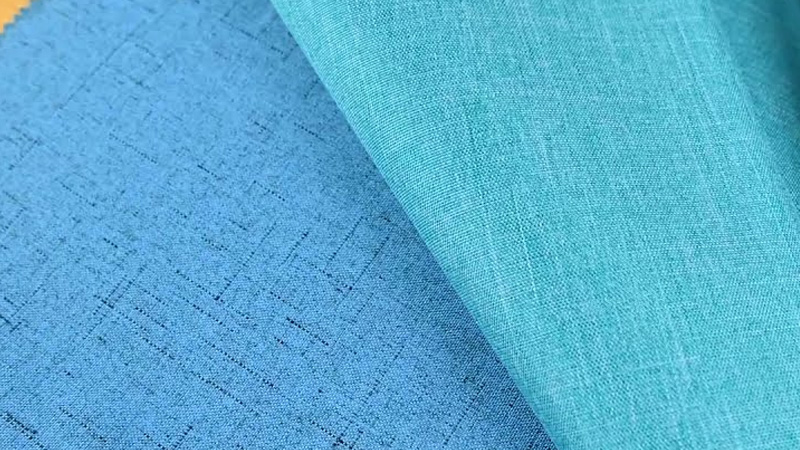
What Is Oxford Fabric?
Oxford fabric is a versatile woven fabric widely used in the fashion industry. It gets its name from Oxford University, where it was initially used for dress shirts.
The fabric is known for its distinctive basket-weave structure, which gives it a textured and lustrous appearance. It is created by intertwining two yarns in the weft direction and one yarn in the warp direction.
Oxford fabric can be made from cotton, polyester, nylon, or a blend of these fibers. Cotton Oxford fabric is famous for its breathability and comfort.
There are different varieties of Oxford fabric, including Plain Oxford, Pinpoint Oxford, and Royal Oxford, each with its characteristics.
It creates a wide range of garments and accessories due to its durability, ease of care, and sophisticated look.
History of Oxford Fabric
The history of Oxford fabric dates back to the 19th century when it was invented in a weaving mill in Scotland. This innovative fabric was created using a Panama weave, which gave it remarkable durability.
Using natural fibers further enhanced its breathability, making it an ideal choice for clothing. Initially, Oxford fabric was primarily used for men’s shirts, particularly formal attire such as the classic Oxford shirt.
However, its popularity quickly spread, becoming a favored fabric for various other garments, including women’s blouses and casual wear.
Over time, Oxford fabric has evolved and diversified, with different variations and finishes available today. Despite its centuries-old origins, Oxford fabric continues to be valued for its enduring quality, comfort, and timeless style.
Types of Oxford Fabric
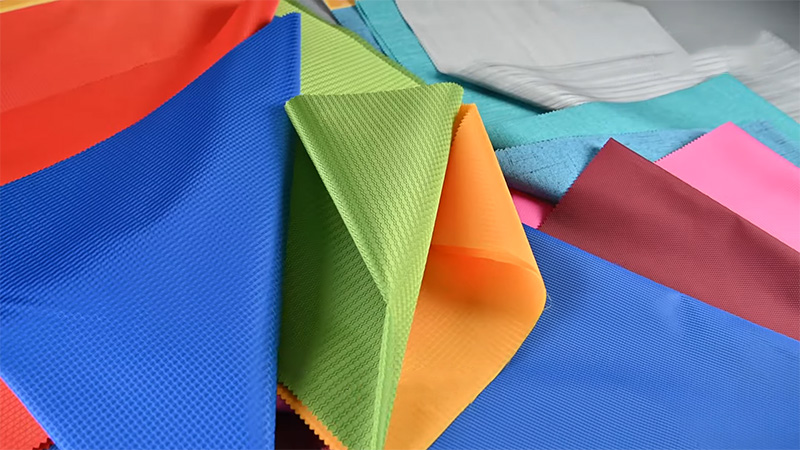
Oxford fabric comes in several different types, each with unique characteristics and uses.
Plain Oxford
Plain Oxford is the most basic and widely used type of Oxford fabric. It is characterized by a slightly coarse texture and a casual appearance.
Plain Oxford is woven with a basket-weave structure using a heavier yarn, resulting in a durable and robust fabric.
It is often used for casual shirt designs, such as button-down collar shirts, and is favored for its comfort and versatility.
Pinpoint Oxford
Pinpoint Oxford is a finer variation of Oxford fabric. It is made from finer yarns and has a tighter weave than plain Oxford. The tighter weave gives pinpoint Oxford a smoother and more refined texture.
One of the distinguishing features of pinpoint Oxford is the “pin” or “dot” effect visible in the texture, which adds a subtle pattern to the fabric.
Pinpoint Oxford is considered dressier than plain Oxford and is commonly used for formal or business-casual shirts.
Royal Oxford
Royal Oxford is a more formal and luxurious type of Oxford fabric. It is characterized by an even finer weave and a more pronounced luster.
The weave structure of royal Oxford is tighter than both plain and pinpoint Oxford, resulting in a smoother and more elegant fabric.
Royal Oxford shirts are often associated with high-end dress shirts and are suitable for more formal occasions.
The fabric’s refined appearance makes it a popular choice for individuals who want to make a sophisticated statement.
These are the primary types of Oxford fabric, but variations and blends also exist. Some Oxford fabrics incorporate synthetic fibers such as polyester or nylon to enhance durability, moisture-wicking properties, or wrinkle resistance.
These blends may offer additional performance characteristics while retaining traditional Oxford fabric’s texture and aesthetic appeal.
Is Oxford Cloth Waterproof?
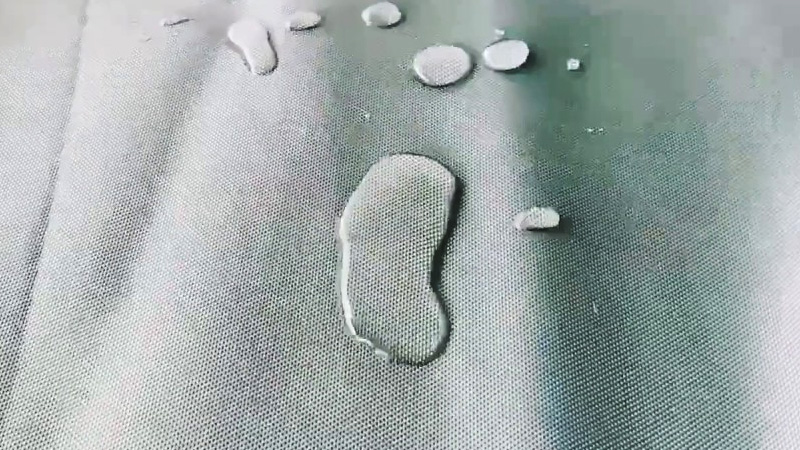
Oxford fabric can indeed be made waterproof by applying certain coatings and finishes. Here is a step-by-step explanation of how the waterproofing process is typically used to Oxford cloth:
Selection of Oxford Fabric
Start with selecting the desired type of Oxford fabric for the specific application. In this case, polyester Oxford fabric is commonly chosen due to its inherent durability and water-resistant properties.
Coating Application
The first step in making Oxford fabric waterproof is applying a specialized coating. Polyurethane (PU) coating is often used for this purpose.
PU coating is a popular choice as it provides excellent waterproofing properties while maintaining the fabric’s flexibility and breathability.
Fabric Preparation
Before the coating is applied, the fabric needs to be prepared. This typically involves cleaning and treating the fabric to ensure it is free from any dirt, dust, or contaminants that could interfere with the waterproofing process.
Coating Process
The PU coating is then applied to the surface of the fabric. This can be done through various methods, including roller coating, spray coating, or immersion.
The coating forms a protective layer on the fabric, preventing water from penetrating the fibers.
Drying and Curing
After the coating is applied, the fabric is dried to allow the coating to adhere correctly. This is typically done through a controlled drying process involving heat or air drying.
The fabric may also undergo curing to ensure the coating becomes fully bonded and durable.
Waterproof Finishing
An additional waterproof finishing treatment may be applied to enhance the fabric’s water-repellency. This finishing treatment can help repel water droplets and prevent them from saturating the fabric’s surface.
Testing
Once the waterproofing process is complete, the fabric is often subjected to rigorous testing to ensure its waterproof properties.
This may involve subjecting the fabric to simulated rainfall or water spray to evaluate its resistance to water penetration.
It’s important to note that while Oxford fabric can be made waterproof, the level of waterproofing may vary depending on the coating and finishing processes applied.
Over time and with wear, the waterproofing properties of the fabric may diminish and require reapplication or reproofing.
Is Oxford Cloth Durable?
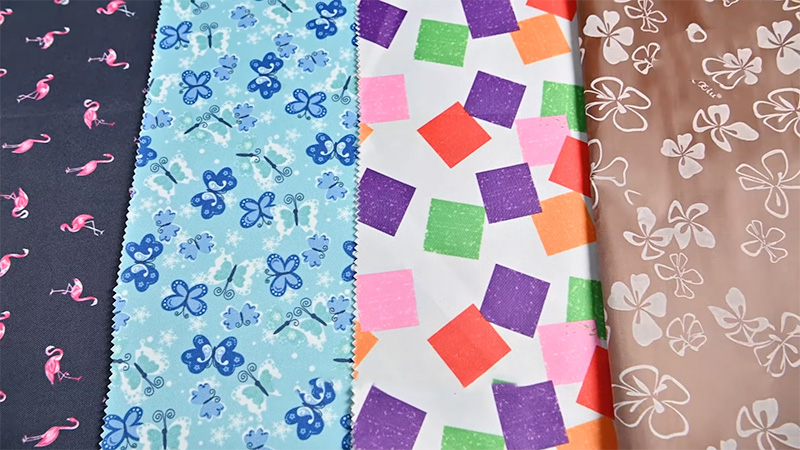
Oxford cloth is known for its exceptional durability, making it a popular choice for various applications.
The fabric’s construction and weave contribute to its strength and ability to withstand everyday wear and tear. Here are some key factors that make Oxford cloth durable:
Weave Structure
Oxford cloth is woven using a basket-weave pattern that involves intertwining multiple yarns. This construction technique creates a tight and robust fabric.
The crisscrossing of yarns adds strength and stability, making Oxford cloth resistant to stretching and tearing.
Yarn Quality
The quality of the yarn used in Oxford cloth also plays a vital role in its durability. High-quality, long-staple fibers are often used to ensure the fabric’s strength and longevity.
Premium yarns contribute to the fabric’s ability to withstand frequent washing, drying, and regular use.
Thickness
Oxford cloth is typically woven with slightly thicker yarns, which adds to its durability. The thicker yarns provide a solid foundation, making the fabric less prone to fraying or developing holes.
The thickness also contributes to the fabric’s ability to retain shape and resist wear over time.
Reinforced Stitching
Oxford cloth garments often feature reinforced stitching, which adds to their durability. This includes techniques like double stitching or bar tacks in critical stress areas such as seams, collar points, and buttons.
Reinforced stitching helps prevent seam failures and ensures the fabric holds well under tension and repeated use.
Resistant to Damage and Wrinkles
Oxford cloth is known for its ability to resist damage and wrinkles. The fabric’s tightly woven structure and durable fibers make it less susceptible to snagging, tearing, or developing visible signs of wear.
This resilience allows Oxford cloth garments to maintain appearance even with frequent washing and regular use.
Aging and Softness
One unique characteristic of Oxford cloth is that it improves with age. Wearing and washing the fabric softens and develops a desirable, lived-in texture.
This aging process does not compromise the fabric’s durability but enhances its comfort and visual appeal.
What Is Oxford Fabric Used For?
Oxford fabric is a versatile and widely used fabric that finds its application in various garments and other products. Here are some common uses of Oxford fabric:
Dress Shirts
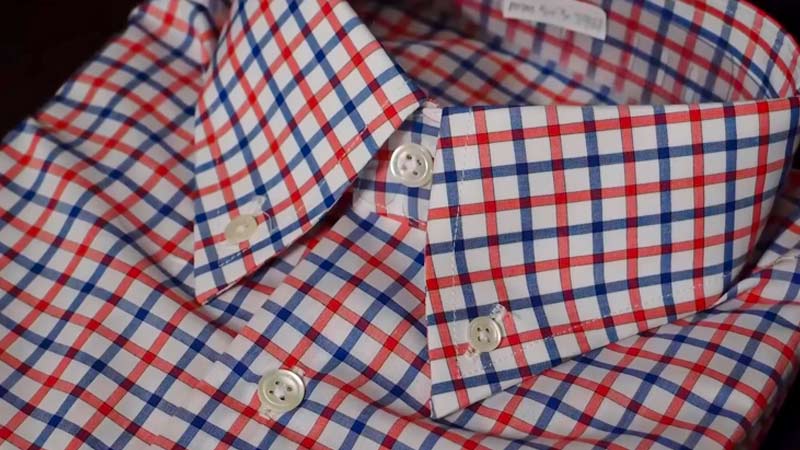
Oxford fabric is most commonly associated with dress shirts, particularly the classic Oxford shirt. The fabric’s durability, texture, and formal appearance make it a popular choice for casual and formal dress shirts.
Oxford shirts are often characterized by button-down collars and are suitable for various occasions, from professional settings to more relaxed events.
Pants and Shorts
Oxford fabric is also used in the production of pants and shorts. Its strength and resilience make it ideal for bottom wear that can withstand regular use and maintain its shape.
Oxford fabric provides a versatile and durable option, whether it’s casual chinos, formal trousers, or comfortable shorts.
Dresses and Skirts
Oxford fabric is occasionally employed in the creation of dresses and skirts. Its textured appearance and sturdiness allow for unique designs and a structured silhouette.
Oxford fabric dresses and skirts can be worn in casual and more polished settings, offering a balance of comfort and style.
Bags and Accessories
Due to its durability and strength, Oxford fabric is commonly used to manufacture bags, backpacks, and luggage.
The fabric’s ability to withstand heavy loads and resist abrasion makes it suitable for everyday use and travel purposes.
Oxford fabric can be found in accessories like hats, wallets, and belts, adding a touch of texture and reliability to these items.
Home Furnishings
Oxford fabric’s durability and resistance to wear and tear make it suitable for various home furnishings. It can be used for upholstery, curtains, cushion covers, and tablecloths, combining style and functionality.
Oxford fabric is often chosen for its ability to withstand regular use and maintain its appearance over time.
Outdoor and Sports Equipment
Oxford fabric’s strength and water-resistant properties make it a desirable outdoor and sports equipment choice.
It is commonly used to produce tents, awnings, canopies, and other outdoor gear that require durability and protection from the elements.
Oxford fabric is also used in making sports bags, backpacks, and equipment cases, offering a robust and reliable solution for athletes and adventurers.
Can You Put Htv on Oxford Fabric?
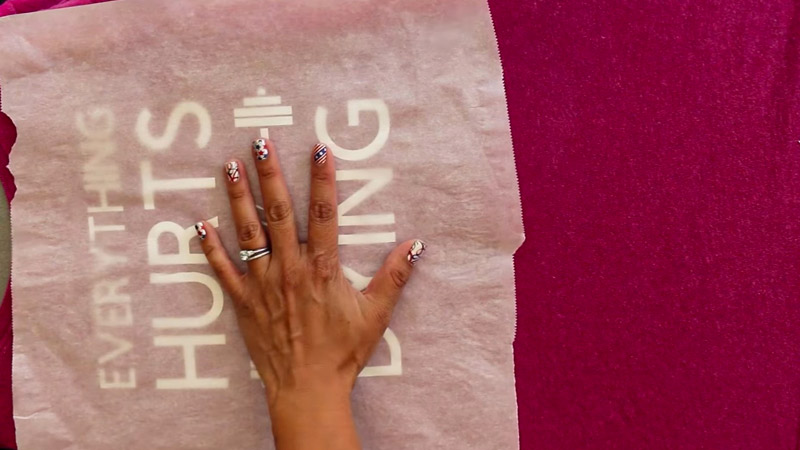
You can put heat transfer vinyl (HTV) on Oxford fabric. Oxford fabric is commonly used for garments like dress shirts, pants, and other clothing items, and applying HTV can be a great way to add personalized designs or logos to these garments.
When applying HTV to Oxford fabric, following proper heat transfer techniques is important to ensure a successful application.
Temperature and Pressure
Follow the temperature and pressure guidelines recommended by the HTV manufacturer. Different types of HTVs may require specific temperature settings.
Use a heat press or iron at the appropriate temperature to activate the adhesive on the vinyl and adhere it to the fabric.
Heat Transfer Protection
To protect the Oxford fabric from direct heat, using a Teflon sheet, parchment paper, or a thin fabric layer between the HTV and the heat source is advisable. This helps prevent any potential scorching or damage to the fabric.
Timing
Heat transfer vinyl requires a specific amount of time under heat and pressure to adhere correctly. Follow the recommended time provided by the HTV manufacturer for the best results.
Application Technique
Apply the HTV to the Oxford fabric following the standard heat transfer process. Place the vinyl on the desired area, cover it with the protective layer, and apply heat and pressure using a heat press or iron.
Ensure that the entire design receives even heat and pressure for a consistent and secure bond.
It’s worth noting that sublimated fabrics, including some Oxford fabrics, may have a pattern or design dyed into the fibers using a sublimation printing process.
When heat pressing HTV onto sublimated fabrics, there is a possibility that the heat from the press can cause the sublimation ink to reactivate and bleed into the HTV design. This can result in color distortion or discoloration.
To minimize the risk of color bleeding, it is recommended to perform a test on a small, inconspicuous area of the fabric before applying HTV to the entire garment.
If the sublimated pattern does bleed, you may need to consider using a different method of personalization, such as embroidery or screen printing, to achieve the desired design.
Can You Iron Oxford Fabric?
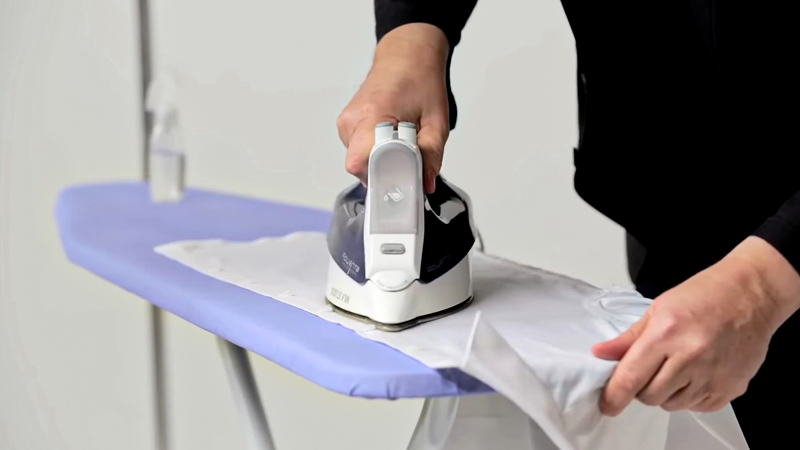
Yes, you can iron Oxford fabric, but it’s essential to do so with caution to avoid damaging it or compromising its spill-resistant qualities.
Temperature Setting
Set your iron to a low or medium-low temperature. Oxford fabric is typically made from synthetic fibers like polyester or nylon, which can melt or warp under high heat. Using a lower temperature will help prevent damage to the fabric.
Ironing Surface
Ironing board or a flat, heat-resistant surface to iron your Oxford fabric. Avoid ironing directly on a hard surface or countertop, as it may cause uneven pressure or heat distribution, leading to potential fabric damage.
Protective Layer
To further protect the fabric, you can place a thin cotton or pressing cloth between the iron and the Oxford fabric. This extra layer helps to distribute heat more evenly and reduces the risk of scorching or shine marks on the fabric.
Gentle Pressure
Apply gentle pressure while ironing. Avoid pressing too hard, as this can flatten the texture of the fabric and potentially cause unwanted shine or flattening.
Test a Small Area
If you’re unsure about the fabric’s reaction to heat, it’s a good idea first to test a small, inconspicuous area of the fabric.
Iron that area using the recommended temperature and technique, and check for any adverse effects before ironing the entire garment.
Avoid Steam
Since Oxford fabric is often treated with spill-resistant coatings, avoiding using steam while ironing is best. Steam can potentially compromise the spill-resistant qualities of the fabric.
Instead, focus on using the iron’s dry heat to smooth out wrinkles.
It’s worth noting that Oxford fabric is often designed to be low maintenance and resistant to wrinkles. In many cases, hanging the garment and allowing it to air out can help reduce minor wrinkles.
However, if ironing is necessary, following the above guidelines will help you achieve wrinkle-free results while minimizing the risk of damage.
Regarding dry cleaning, using harsh chemicals in the dry cleaning process may reduce the spill-resistant qualities of Oxford fabric.
If spill resistance is a priority, it’s best to avoid dry cleaning and instead focus on spot cleaning or using other gentle cleaning methods recommended for the specific fabric type.
Is Oxford Cloth Durable?
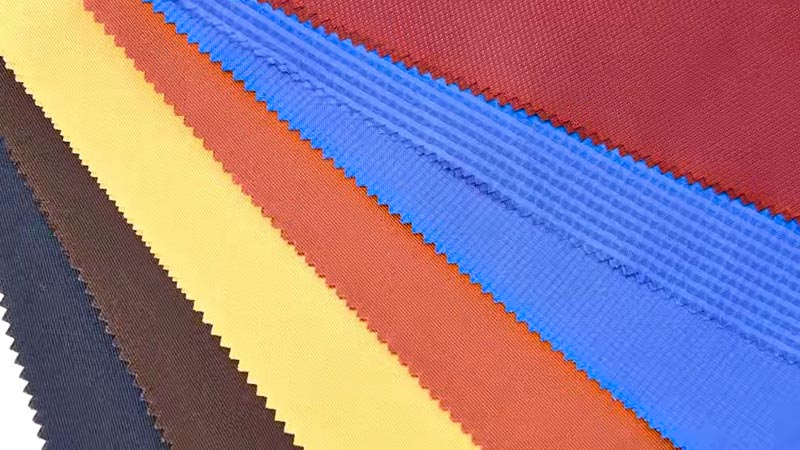
Oxford cloth is known for its exceptional durability, making it a reliable and long-lasting fabric choice. Here are some reasons why Oxford cloth is considered durable:
Weave Structure
Oxford cloth is woven using a basket-weave pattern, interlacing multiple warp and weft yarns.
This construction technique creates a tight and robust fabric. The crisscrossing of yarns adds strength and stability, making Oxford cloth resistant to stretching and tearing.
High-Quality Yarns
The use of high-quality yarns further enhances the durability of Oxford cloth. Cotton or polyester fibers with long staple lengths are often chosen to create Oxford cloth.
These premium yarns contribute to the fabric’s strength and ability to withstand wear and tear over time.
Thickness
Oxford cloth is typically woven with slightly thicker yarns compared to other fabrics. The thicker yarns provide a solid foundation, making the fabric less prone to fraying or developing holes.
The thickness also contributes to the fabric’s ability to retain its shape and resist wear even with frequent use.
Resistance to Damage
Oxford cloth is designed to be resilient and resistant to damage. Its tightly woven structure helps protect against snags, tears, and abrasions.
This durability makes Oxford cloth suitable for garments and products subject to frequent use and potential rough handling.
Easy Maintenance
Oxford cloth is often easy to care for, adding to its durability. It can typically be washed and dried with other garments, allowing for convenient and hassle-free cleaning.
The fabric’s ability to withstand regular washing without losing its integrity contributes to its long-term durability.
Aging and Softness
One unique aspect of Oxford cloth is that it tends to improve with age. Wearing and washing the fabric, it softens and develops a desirable, lived-in texture.
This aging process does not compromise the fabric’s durability but enhances its comfort and visual appeal.
How to Clean Oxford Fabric?
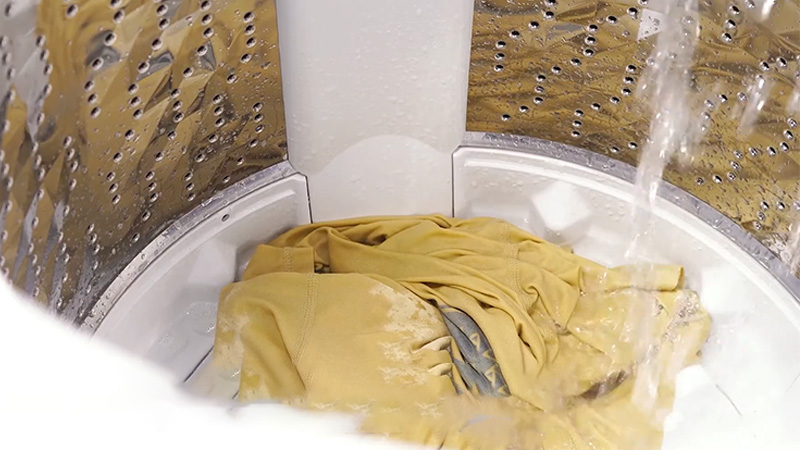
Cleaning Oxford fabric requires a gentle approach to preserve its quality and longevity. Here are some steps you can follow to clean Oxford fabric effectively:
Assess the Stain
Identify the type of stain on the fabric. Different stains may require different cleaning methods. It’s essential to address the stain promptly to prevent it from setting.
Spot Cleaning
Use a soft brush or cloth dipped in mild soap and water for minor stains. Gently blot or wipe the stained area in a circular motion.
Avoid scrubbing vigorously, as this can damage the fabric or spread the stain further. Rinse the area with clean water to remove any soap residue.
Soaking
You can create a soaking solution for more stubborn stains or refresh the fabric. Fill a basin or sink with cool water and add a small amount of mild detergent or stain remover suitable for the fabric type.
You can also add a tablespoon of salt or white vinegar to the water for the first washing of Oxford cloth bags. Soak the fabric in the solution for about 15 minutes, gently agitating the water occasionally to help release the stains.
Hand Washing
After soaking, gently hand wash the Oxford fabric in cool or lukewarm water. Use a gentle squeezing or swirling motion to clean the fabric.
Avoid wringing or twisting the fabric, which can cause stretching or distortion. Rinse thoroughly with clean water to remove any remaining detergent or vinegar.
Drying
After washing, carefully remove excess water from the fabric by pressing it gently between towels. Avoid wringing or squeezing the fabric too tightly.
Then, allow the fabric to air dry in a shaded area. Avoid direct sunlight, as it can cause fading or damage to the fabric. Ensure proper air circulation to expedite the drying process.
Dry Cleaning
If you are unsure about the fabric’s reaction to water or if the care label recommends dry cleaning, you can opt for professional dry cleaning services.
Inform the dry cleaner about the nature of the fabric and any specific stains for appropriate treatment.
It’s important to always refer to the care instructions provided by the manufacturer or the garment’s care label.
Different variations of Oxford fabric may have specific cleaning requirements, and following the recommended guidelines ensures optimal care.
Advantages and Disadvantages of Oxford Fabrics
Oxford fabric is a type of woven fabric commonly used in clothing, accessories, and upholstery. It is known for its durability, breathability, and versatile appearance. Here are some advantages and disadvantages of Oxford fabrics:
Advantages of Oxford Fabrics:
- Durability: Oxford fabrics are known for their exceptional durability. They are woven with a basket-weave pattern and often made from high-quality fibers like cotton or polyester. This construction and choice of materials contribute to the fabric’s ability to withstand wear and tear, making it long-lasting.
- Versatility: Oxford fabrics are versatile and can be used for various applications. They are commonly used for dress shirts, pants, blouses, skirts, and other garments. They are also used in accessories like bags, backpacks, and upholstery. The fabric’s versatility makes it suitable for both casual and formal settings.
- Texture and Appearance: Oxford fabrics have a distinctive lustrous and textured appearance due to their basket-weave structure. This texture adds visual interest to garments and gives them a sophisticated look. The fabric’s texture also helps to hide minor wrinkles, making it suitable for those who prefer a slightly more relaxed or casual look.
- Comfort: Oxford fabrics, especially those made from natural fibers like cotton, are generally comfortable to wear. They are breathable, allowing air circulation and preventing overheating. The fabric’s softness and ability to improve with age add to its comfort level.
- Ease of Care: Oxford fabrics are often accessible to care for, making them suitable for everyday use. They can usually be machine-washed, dried, and even ironed with care. This convenience in maintenance adds to their appeal for those seeking practical and low-maintenance garments.
Disadvantages of Oxford Fabrics:
- Wrinkling: Despite their durability, Oxford fabrics can be prone to wrinkling, especially when compared to fabrics with a smoother texture. While some appreciate the slightly wrinkled appearance as part of the fabric’s casual charm, others may find it undesirable or prefer a crisper and wrinkle-free look.
- Limited Stretch: Oxford fabrics typically have limited stretch due to their tightly woven structure. This can make them less flexible and less accommodating to body movements than stretchier fabrics. This is something to consider when choosing Oxford fabric for garments that require a more excellent range of motion.
- Heat Retention: Oxford fabrics, especially those made from synthetic fibers, can retain heat more than lighter and more breathable fabrics. This may not be ideal for hot and humid environments or individuals susceptible to heat. However, this can be mitigated by choosing Oxford fabrics made from natural fibers like cotton, which are more breathable.
- Color Fading: Some Oxford fabrics may experience color fading over time, particularly when exposed to direct sunlight or harsh washing practices. This is more common in lower-quality or poorly dyed fabrics. To maintain the vibrancy of colors, following proper care instructions and avoiding prolonged exposure to sunlight is recommended.
- Limited Water Resistance: Some Oxford fabrics may have spill-resistant qualities or coatings but are not inherently waterproof. They may provide some resistance to light spills, but excessive exposure to water or prolonged moisture can compromise their protective properties. It’s essential to check the specific characteristics of the Oxford fabric in question to determine its water resistance level.
Oxford fabrics offer numerous advantages, such as durability, versatility, and a distinctive appearance. However, potential disadvantages include wrinkling, limited stretch, heat retention, color fading, and limited water resistance.
Consider these factors when selecting Oxford fabric for your intended application to ensure it meets your needs and preferences.
Comparison Table Between Oxford and Other Fabrics
| Fabric | Oxford | Poplin | Twill |
|---|---|---|---|
| Weave Structure | Basket Weave | Plain Weave | Twill Weave |
| Durability | Highly durable | Durable | Durable |
| Texture | Lustrous, textured | Smooth | Diagonal ribbing |
| Wrinkle-Resistance | Moderate | Moderate | Moderate |
| Breathability | Moderate | High | Moderate |
| Stretch | Limited | Limited | Moderate |
| Common Use | Dress shirts, | Dress shirts, | Pants, jackets, |
| pants, | blouses, | skirts, | |
| accessories | lightweight | workwear, | |
| garments | upholstery | ||
| Maintenance | Machine washable, | Machine washable, | Machine washable, |
| iron with care | iron with care | iron with care | |
| Price | Moderate to high | Moderate | Moderate to high |
This table compares Oxford fabric, poplin, and twill fabric.
FAQs
Yes, Oxford fabric is often used for outdoor applications due to its durability and resistance to damage. It can be used for outdoor furniture, tents, umbrellas, and covers. However, it’s essential to consider specific outdoor requirements such as UV resistance and waterproof coatings when selecting Oxford fabric for outdoor use.
Yes, Oxford fabric can be dyed. However, the ease of dyeing and colorfastness may vary depending on the specific composition of the fabric (cotton, polyester, or a blend) and the dyeing method used. Following the manufacturer’s recommendations and considering professional dyeing services for optimal results is advisable.
Oxford fabric made from natural fibers like cotton may have some degree of shrinkage when exposed to high heat or improper washing and drying techniques. Polyester or synthetic blends typically have minimal shrinkage. To prevent shrinkage, it is best to follow the care instructions provided by the manufacturer and avoid using high heat during washing and drying.
Yes, Oxford fabric can be used for formal attire, particularly in its royal Oxford variation. Royal Oxford has a finer weave and a slightly dressier appearance than plain Oxford or pinpoint Oxford. It can be used for formal shirts, blouses, or other garments that require a more polished and refined look.
You can use a low-temperature iron or steam iron to remove wrinkles from Oxford fabric. Set the iron to a low heat setting and ensure there is no water in the iron if you’re using a dry iron. Press the iron over the fabric, using a pressing cloth if desired, and avoid applying excessive pressure. Alternatively, you can hang the garment in a steamy bathroom or use a fabric steamer to relax the wrinkles.
Bleach is generally not recommended for Oxford fabric, mainly if it contains synthetic fibers like polyester. Bleach can damage the fabric, weaken its fibers, and cause discoloration. It’s best to avoid using bleach and instead opt for mild detergents or stain removers suitable for the fabric type.
To Recap
Oxford fabric stands out as a reliable and versatile material in fashion. Its durability, texture, and timeless appeal make it a popular choice for various garments, from casual shirts to formal attire.
With variations like plain Oxford, pinpoint Oxford, and royal Oxford, there are options to suit different preferences and occasions.
Whether it’s the lustrous appearance, the comfort of the fabric, or the ability to withstand wear and tear, Oxford fabric continues to be favored by designers and wearers alike.
Oxford fabric remains a staple in the fashion industry as a fabric that can be worn for years and only gets better with age.
Leave a Reply